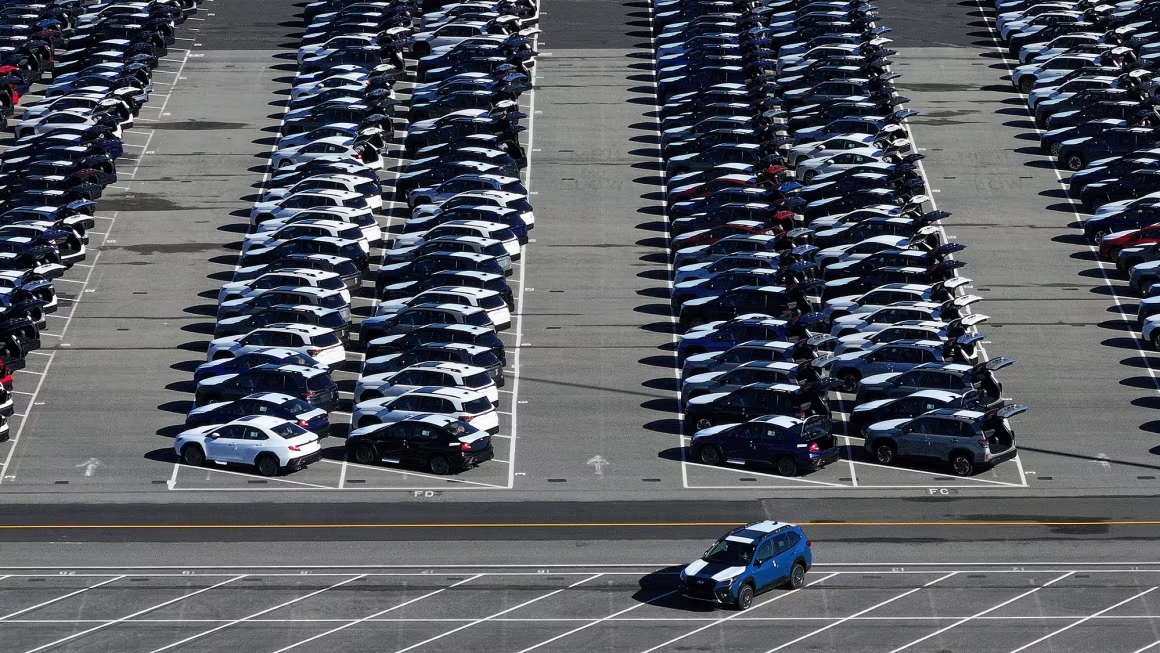U.S. President Donald Trump announced a sweeping trade agreement with Japan on Tuesday night, touting it as a landmark deal between two longtime allies. The announcement follows months of tense negotiations and comes just ahead of a looming August 1 tariff deadline set by the Trump administration for dozens of trading partners.
“I just signed the largest trade deal in history; I think maybe the largest deal in history with Japan,” Trump said during a reception with Republican members of Congress. “They had their top people here, and we worked on it long and hard. And it’s a great deal for everybody.”
The agreement introduces a 15% “reciprocal” tariff on Japanese goods exported to the United States. Crucially, this rate will also apply to automobiles and car parts—sectors central to Japan’s economy. The 15% rate represents a reduction from the previously threatened 25% tariff imposed on the global automotive sector earlier this year.
Japan, in return, has pledged a substantial $550 billion investment in the United States. According to Trump, “the US will receive 90% of the profits.” In a post on Truth Social, he emphasized the economic impact of the deal, saying, “This Deal will create Hundreds of Thousands of Jobs — There has never been anything like it. Perhaps most importantly, Japan will open their Country to Trade including Cars and Trucks, Rice and certain other Agricultural Products, and other things. Japan will pay Reciprocal Tariffs to the United States of 15%.”
Japanese officials echoed satisfaction with the outcome. Ryosei Akazawa, who led tariff negotiations for Japan, celebrated the deal in a post on X, writing “Mission accomplished,” alongside a photo of himself at the White House pointing to an image of Trump and Japanese Prime Minister Shigeru Ishiba in earlier talks.
Akazawa told reporters in Washington that Japan is “the first in the world to be able to reduce tariffs on automobiles and auto parts without volume restrictions.” He also elaborated that the $550 billion investment into the US will be structured as equity and loans, focusing on sectors such as pharmaceuticals and semiconductors.
Prime Minister Ishiba, speaking from Tokyo, described the agreement as “the lowest figure to date for a country that has a trade surplus with the United States,” and added, “We believe that this will contribute to the creation of jobs, the production of good products, and the fulfillment of various roles in the world through the mutual cooperation of Japan and the US.” He also noted that the Japanese government would “carefully” examine the deal’s details.
Akazawa addressed agricultural concerns, affirming that while American rice imports to Japan may increase, the deal would “not sacrifice Japanese agriculture.” Further discussions between the two nations will continue over unresolved tariff issues, including a 50% levy that remains on Japanese steel and aluminum exports.
This deal marks Trump’s third major trade announcement on Tuesday alone. Trade talks with the European Union, South Korea, India, and others have largely stalled ahead of Trump’s tariff deadline next week.
Negotiations with Japan were long characterized as difficult. In June, Trump remarked aboard Air Force One, “They’re tough. The Japanese are tough.” However, on Tuesday he struck a more optimistic tone, declaring it a “very exciting time for the United States of America, and especially for the fact that we will continue to always have a great relationship with the Country of Japan.”
One persistent sticking point in negotiations had been rice. Last month, Trump criticized Japan’s restrictive import practices, posting on Truth Social: “They won’t take our RICE, and yet they have a massive rice shortage.” According to U.S. Census Bureau data, Japan imported $298 million worth of U.S. rice last year and $114 million between January and April this year.
A 2021 report from the U.S. Trade Representative under the Biden administration noted that “Japan’s highly regulated and nontransparent system of importation and distribution for rice limits the ability of US exporters to have meaningful access to Japan’s consumers.”
Automobiles have also remained a flashpoint in talks. Earlier this month, Trump claimed, “We didn’t give them one car in 10 years.” However, according to the Japan Automobile Importers Association, Japan imported 16,707 American-made vehicles last year.
Progress in negotiations became more visible last week when U.S. Treasury Secretary Scott Bessent met with Prime Minister Ishiba in Tokyo. Following the meeting, Bessent posted on X that he remained hopeful. “A good deal is more important than a rushed deal, and a mutually beneficial trade agreement between the United States and Japan remains within the realm of possibility,” he said.
Trade experts say the agreement, while relieving short-term tariff pressure on Japan, may offer longer-term competitive advantages. “The ‘deal’ relieves Japan of the 25% tariff threat and puts it potentially in a competitive position vis a vis similar US suppliers,” said Mary Lovely of the Peterson Institute. “The US is unlikely to sell many cars and trucks… from the US. Agricultural liberalization (is) a win for Japanese consumers, assuming they are willing to try excellent California rice.”
Unlike smaller recent deals with Indonesia and the Philippines, Japan is a major U.S. trading partner. It is the fifth-largest source of imports into the United States, sending $148 billion worth of goods last year, including automobiles, car parts, and heavy machinery. In contrast, U.S. exports to Japan totaled $80 billion, primarily in energy, pharmaceuticals, and aerospace products.
In April, Japanese goods briefly faced a 24% tariff before Trump initiated a 90-day pause. Since then, tariffs have remained at a minimum of 10%. Earlier this month, Trump sent a letter to Prime Minister Ishiba threatening to increase tariffs to 25% by August 1 unless a deal was reached.
During Tuesday’s reception, Trump also mentioned a developing agreement for a U.S.-Japan joint venture on an Alaskan gas pipeline project. “They’re all set to make that deal now,” he said, although details were not provided.
Japan remains in a delicate strategic position. As the U.S. applies pressure to reduce economic reliance on China, Japan—whose top trading partner is China—must navigate carefully to maintain favorable terms with both global powers.
This latest agreement builds on the expanded trade deal the U.S. and Japan signed in 2019, which took effect the following year, increasing the number of goods that could be traded duty-free.
Japan continues to hold substantial influence in U.S. financial markets as well. It remains the largest foreign holder of U.S. Treasuries, with a stake of $1.1 trillion—an asset that plays a key role in financing America’s national debt.






